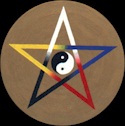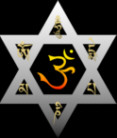Star Symbols
Star Symbolshttp://www.byzant.com/symbols/stars.html As a light shining in the darkness, the star is often considered a symbol of truth, the spirit and of hope. Aleister Crowley's (http://www.byzant.com/biography/_showbiography.asp?ID=2) famous maxim - "every man and every woman is a star" - links the symbol of the star with the concept of the divine spark within each of us. Their nocturnal nature leads stars to represent the struggle against the forces of darkness and the unknown, as suggested by Carl Jung's (http://www.byzant.com/biography/_showbiography.asp?ID=3) use of the Mithraic saying - "I am a star which goes with thee and shines out of the depths". While the multiplicity of stars can have associations of disintegration, their fixed nature brings connotations of order and destiny, and it is on this framework that astrology (http://www.byzant.com/astrology/) is founded. The Star is the seventeenth trump in the Major Arcana (http://www.byzant.com/tarot/major.html) of the Tarot (http://www.byzant.com/tarot/) and is a card of hope and, esoterically, the uniting of spirit with matter though the mediation of the soul. When an individual star is employed as an esoteric symbol, its meaning depends upon the number and sometimes the orientation of its points. Discussions of the meanings of a variety of star symbols are available through the links below. |
 (http://www.byzant.com/symbols/pentagram.html) (http://www.byzant.com/symbols/pentagram.html) | The pentagram (http://www.byzant.com/symbols/pentagram.html) is a powerful symbol of protection and balance, shown here in its elemental form with the fifth element of Spirit taking its proper place above the four manifest elements. This pentagram incorporates the oriental yin-yang (http://www.byzant.com/symbols/yinyang.html) symbol to emphasize its harmonizing nature. There is a separate discussion of the pentagram as Pentagrammaton (http://www.byzant.com/symbols/pentagrammaton.html). |
| The hexagram (http://www.byzant.com/symbols/hexagram.html) or Star of David is a potent symbol of the interaction of the Divine with the mortal, of God with Humankind. The hexagram shown here illustrates its links with the six syllable mantra of Avalokiteshvara, a discussion of which can be found in the Hexagram and OM (http://www.byzant.com/symbols/hexagrom.html). |  (http://www.byzant.com/symbols/hexagram.html) (http://www.byzant.com/symbols/hexagram.html) |
 (http://www.byzant.com/symbols/septagram.html) (http://www.byzant.com/symbols/septagram.html) | The septagram (http://www.byzant.com/symbols/septagram.html) or seven-pointed star is a symbol of integration and the mystical due to its links with the number seven. It is associated with the seven planets (http://www.byzant.com/astrology/planets.html) of classical astrology (http://www.byzant.com/astrology/) and to other seven-fold systems, such as the Hindu chakras. |
| The octagram (http://www.byzant.com/symbols/octagram.html)
or eight-pointed star is a symbol of fullness and regeneration,
and is linked to eight-fold systems such as trigrams
of the I Ching (http://www.byzant.com/festivals/wheelofchanges.html), the pagan
wheel of the year (http://www.byzant.com/festivals/paganyear.html) and the
Ogdoad (http://www.byzant.com/scriptorium/ogdoad.html) of ancient Egypt.
|  (http://www.byzant.com/symbols/octagram.html) (http://www.byzant.com/symbols/octagram.html) |
 (http://www.byzant.com/symbols/nonagram.html) (http://www.byzant.com/symbols/nonagram.html) | The nonagram (http://www.byzant.com/symbols/nonagram.html) or nine-pointed star is a symbol of achievement and of stability, though this is a stability that is subject to change. It can also be related to nine-fold systems, such as the nine Taoist (http://www.byzant.com/biography/_showbiography.asp?ID=30)kanji (psychic centers) which are similar to the Hindu chakras. |


